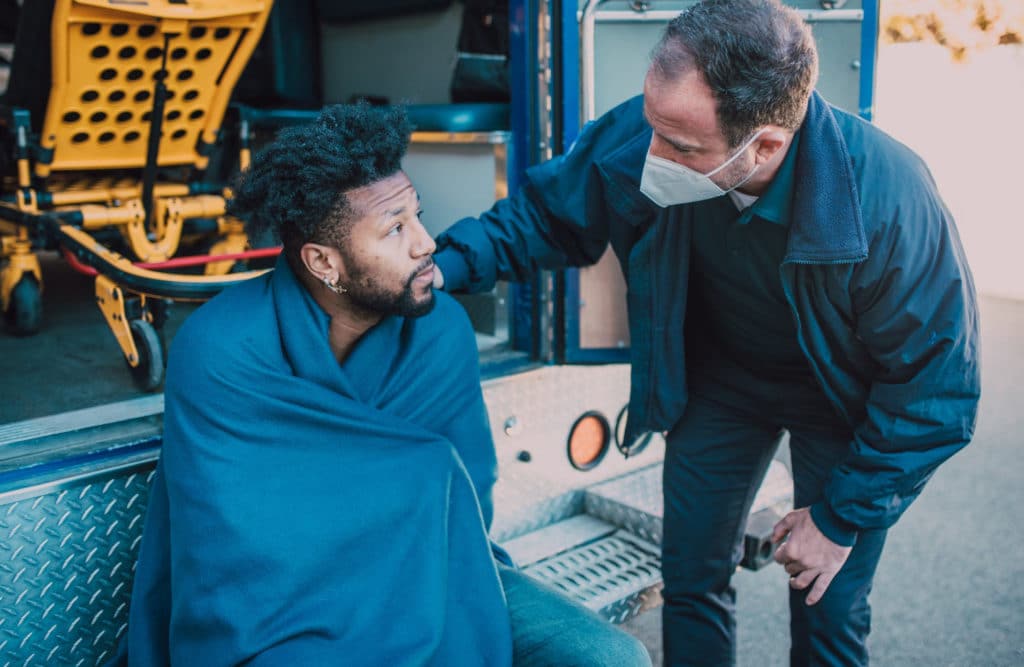Illicit fentanyl is now the leading cause of opioid-related deaths.
Fentanyl, a potent synthetic opioid, continues to make alarming national headlines. Illicit fentanyl continues to flood American streets, adding to grim overdose statistics. As many news reports state, only a tiny amount of fentanyl can prove fatal. It is important to understand the role of fentanyl in the opioid epidemic and how we can protect our communities.
The endless stream of news about fentanyl is frightening. However, learning about the basic facts of fentanyl can help settle anxieties and empower those who are affected. In the meantime, Health Care Resource Centers (HCRC) is committed to educating the public about a drug that is becoming nearly inescapable.
Statistics about the Role of Fentanyl in the Opioid Epidemic
Here are some facts about fentanyl that you may not know:
- It is a synthetic opioid, which means that its origins are not from the poppy plant like heroin
- It can be used medically for acute pain, surgery and end-of-life care
- Fentanyl addiction has now surpassed heroin addiction
- It is 50 to 100 times stronger than heroin or morphine
- It does not have any distinct smell, taste, color or texture
- Illicit fentanyl imports come from foreign countries, mainly China and Mexico
- It is inexpensive to make, and a little goes a long way, so traffickers often mix it with other drugs
- Illicit fentanyl is present in pressed pills, nasal sprays, powders and sublingual strips
- Doses from illicit fentanyl can vary, making any amount potentially fatal
- 42% of illegal pills tested to have 2mg of fentanyl, which can be a lethal dose for many
- Traffickers distribute fentanyl by the kilogram, with the potential to kill approximately 500,000 people
- Overdose deaths involving opioids rose almost 40% in the past 2 years
- Synthetic opioid deaths, primarily fentanyl, have risen nearly 56% between 2020-2021
- Fentanyl and other synthetic opioids contribute to 70% of overdose deaths
- About 136 people die every day from opioid overdose, both illicit and prescription
Most recently, a mix of fentanyl with Xylazine (a non-opioid sedative) has become a common mix. This combination frequently leads to overdose deaths. Click here to learn more about Xylazine.
Signs of Fentanyl Overdose and What To Do
If you or someone you know misuses fentanyl, it is vital to recognize signs of overdose. By noticing the symptoms of overdose early, medical intervention can save a life.
Fentanyl overdose indicators include:
- Shallow breathing or failure to breathe
- Gurgling or snoring sounds
- Slowed or no heart rate
- Pale face and clammy skin
- Blue fingernails
- Limp arms and legs
- No response to stimulus
- Disorientation
- Unconsciousness
These signs indicate that a person is potentially overdosing and they need help immediately. Call 911 and stay on the line with the dispatcher while they give you directions. Sometimes, overdose can happen quickly, but other times, it happens slowly over the span of hours. Everyone’s reaction to fentanyl will depend on the dose and their tolerance to the drug.
Effective Strategies to Combat Fentanyl Misuse
People who recreationally use street drugs must be on high alert for fentanyl. It is popping up in many kinds of substances purchased illicitly. Classic harm reduction testing kits are unreliable as they may only check for heroin, which has a poppy plant derivative. New, updated fentanyl test strips are now available and should be used instead. However, depending on user error and various drug formulations, these test strips are not foolproof.
People who use drugs or know others who do should look to obtain a lifesaving dose of naloxone. It is typically sold or handed out for free as a nasal spray called Narcan. Naloxone can help reverse a suspected overdose while paramedics are on their way to help further. Follow the link to learn more about Narcan for fentanyl overdoses.
Note: even if you dispense naloxone to a person overdosing, you must still call paramedics. Sometimes, one dose is not sufficient to reverse the overdose. The person will need additional medical intervention from EMTs.
The role of fentanyl in the opioid epidemic makes it difficult to combat. It has become much more prevalent and cheaper than heroin ever was in the past. Still, there are prevention efforts within high-risk communities to offer treatment for those with fentanyl addiction.
Sometimes, fentanyl statistics are not enough to scare people away from using illicit street drugs. Continuing to discuss the dangers of opioids and the drug overdose epidemic may feel hopeless. However, medication-assisted treatment (MAT) for opioid use disorder is becoming more accessible across the country. By working together to tackle the issue head-on, more people can get help.
Destigmatizing addiction and treating recovery as a medical journey is critical to getting more people on the right path. Get involved with your community to help stop the havoc of illicit fentanyl. Join local groups to help promote education, prevention, and treatment avenues.
Learn More about the Role of Fentanyl in the Opioid Epidemic with HCRC
Fentanyl poses a severe risk to even the most casual illicit drug users. Those who have been grappling with substance misuse for longer should be particularly alert to the dangers. Overdose can happen even to the most experienced drug users, especially with an unregulated and illicit opioid.
If you struggle with opioid use disorder, this is the sign you have been seeking. There has never been a more critical time to get help and enroll in outpatient addiction treatment. HCRC provides evidence-based treatment methods for opioid use disorder with the help of FDA-approved medications and substance use counseling.
Recovery is possible, no matter how long you have been misusing substances. An entire medical team is ready to help you on your recovery journey if you take the first step. To learn more about the programs available, message or call the friendly HCRC administrative staff at a local facility today.

